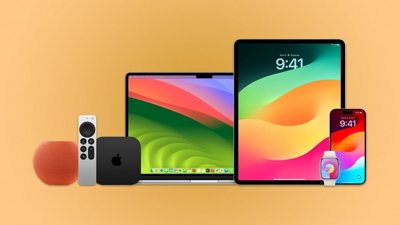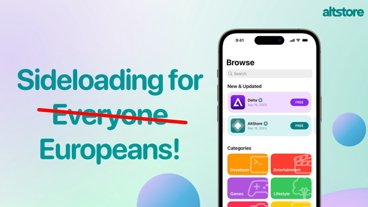Review roundup: T-Mobile's G1, the first Android-based handset
We've rounded up reviews of the new touch-screen handset from three major media outlets, noting some highlights from each review.
"I have been testing the G1 extensively, in multiple cities and in multiple scenarios," wrote the Wall Street Journal's Walt Mossberg, who believes the device will cater to different users than Apple's iPhone. "In general, I like it and consider it a worthy competitor to the iPhone."
- The G1’s biggest differentiator is that it has a physical slide-open keyboard, which proved "only fair." Keys are too flat, hard to see in bright sunlight, and somewhat obstructed by bulge in the body of the G1 on the right side.
- The touch interface is fast and smooth. Programs pop up when you drag up a tab at the bottom of the screen. New messages notifications can be seen by dragging down the top bar of the screen.
- More flexibility in organizing your desktop than on the iPhone.
- It's easier to place a phone call on the G1 than on the iPhone. You can just start typing a number randomly from the home screen. There's also a virtual phone keyboard so you don't have to use the physical one.
- Unlike the iPhone, the G1 offers copy and paste of text, and the ability to send photos directly to other phones without relying on email.
- T-Mobile allows you to unlock the G1 after 90 days and use it on another carrier's network if you pay their substantial early termination fee.
- Battery is about the same as the iPhone for mixed use and must be recharged just about every night.
- The Android Market (App Store rival) works well and unlike Apple, Google says it isn't blocking any programs. (However, it was also revealed Thursday that Google has embedded a kill switch into Android just like Apple has with its iPhone OS.)
- One of the G1's downsides is that it's "a chunky brick of a device," Mossberg says. "While it’s a bit narrower than the iPhone and feels OK in the hand, it’s almost 20% heavier and nearly 30% thicker. It also has a smaller screen and doesn’t accept standard stereo headphones."
- Memory limited to 1GB. Beyond that users need to shell out for a larger memory card. During his tests, the G1 warned Mossberg that it was running out of memory — something he's never witnessed on the iPhone.
- Only to get contacts and calendar items into the phone is to synchronize with Google’s online calendar and contacts services. Users MUST have a Google ID to use the handset.
- No Exchange support, can't sync directly with a Mac or PC, and media files must be synced over through manual drag-and-drop.
- Touch user interface is inferior to the iPhone's. No flick, pinch, or zoom with fingers. Doesn't automatically change orientation. No video player.
- T-Mobile offers 3G services in only 20 cities compared to AT&T's 320.
A promotional video for the HTC-developed T-Mobile G1.
"While it's far from perfect, the G1 powered by Google's Android operating system is packed with plenty of consumer-oriented features that may even make iPhone fans take notice," writes The Associated Press' Rachel Metz.
- Don't lose the tiny included 1GB microSD card, because you'll lose all your photos and songs and have to buy more storage.
- Has compass and "Street View" feature in Google Maps which the iPhone does not.
- Good-looking browser that is simple to navigate, and the device's screen is clear and sharp.
- T-Mobile's relatively new 3G network is more impressive than AT&T's, but this could change once it actually has to carry the load of more phones.
- Talking, Web surfing and content downloading can quickly run down the battery, forcing avid users to tote around a charging cable.
- Android Market works well but there are only about three dozen applications and 10 games.
- "Barcode Scanner" that uses the G1's 3-megapixel camera worked well.
- The G1's Amazon.com online MP3 store app is easy to browse and offers quick downloads of songs free of copy protection.
- Video and song playback is hampered by lack of standard headphone jack. Instead, an "uncomfortable earbud headset" is included that plugs into the mini USB port that is also used to charge the phone.
"The first thing I noticed about the T-Mobile G1 Android phone right out of the box is that it pretty much looks like all the other black-slab, touchscreen phones that are trying to emulate Apple’s iPhone," said MSNBC's Suzanne Choney.
- Not as fluid and simple to use as the iPhone, but Google is off to a good start.
- Web pages are rendered realistically and quickly, even on T-Mobile's 2G network.
- The screen is "not as good a quality as on the iPhone."
- In addition to a touch-screen, it has a slide-out QWERTY keyboard and a trackball, which means "more fiddling around [and] remembering which tool to use."
- Does not have the uniform ease of the iPhone’s finger swipe/touch approach.
- G1’s QWERTY keys are too small, even for little fingers, presenting some of the same problems people face with the iPhone's keyboard.
- The slight curve at the bottom of the G1 means it's less likely to fall if wedged between your shoulder and ear like an iPhone.
- Has voice dialing feature, which iPhone doesn't.
- Has a 3.2-megapixel camera; the iPhone a 2-megapixel camera. But neither phone can record video.
 Slash Lane
Slash Lane










 Malcolm Owen
Malcolm Owen
 Amber Neely
Amber Neely

 William Gallagher
William Gallagher


 Andrew Orr
Andrew Orr
 Christine McKee
Christine McKee






